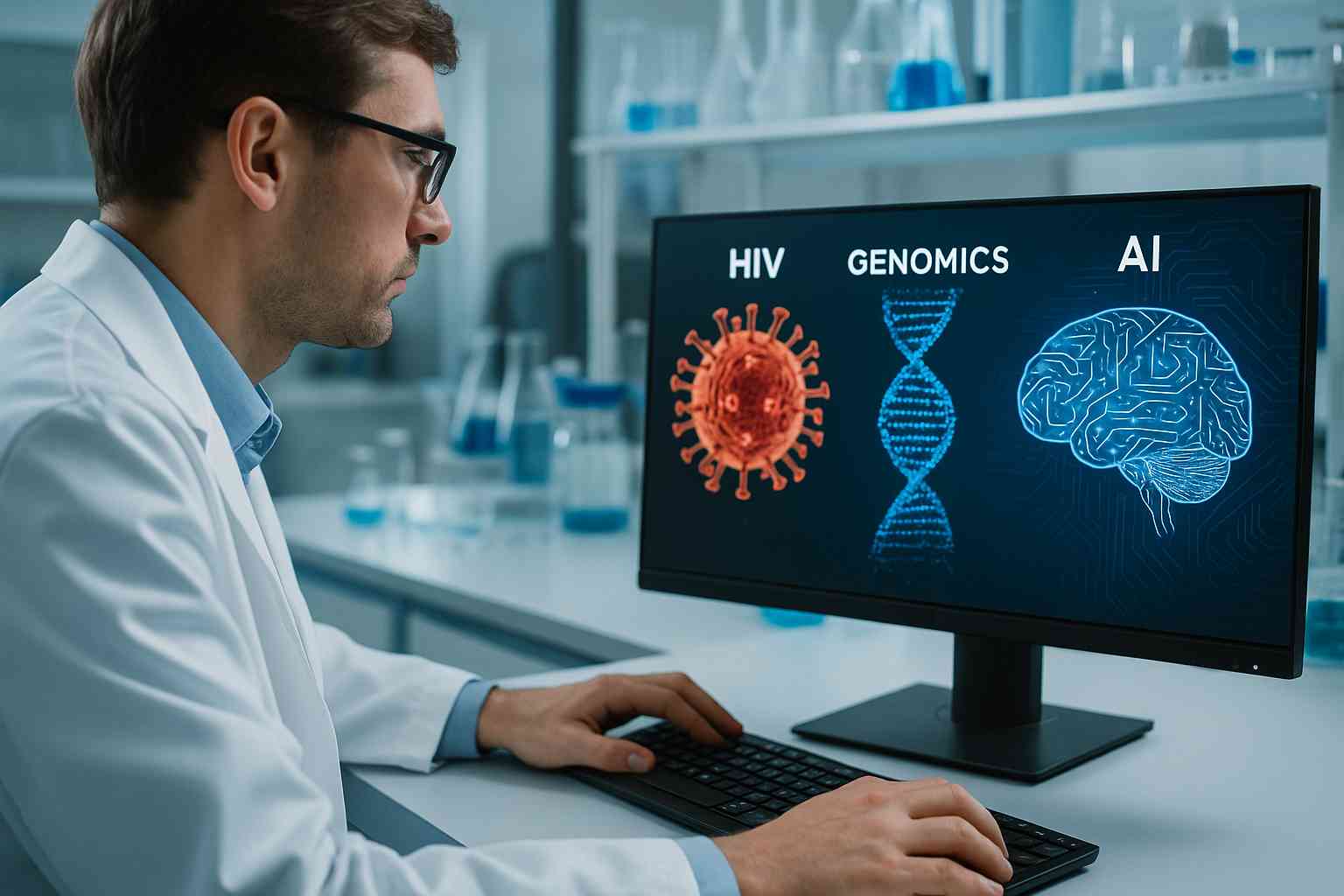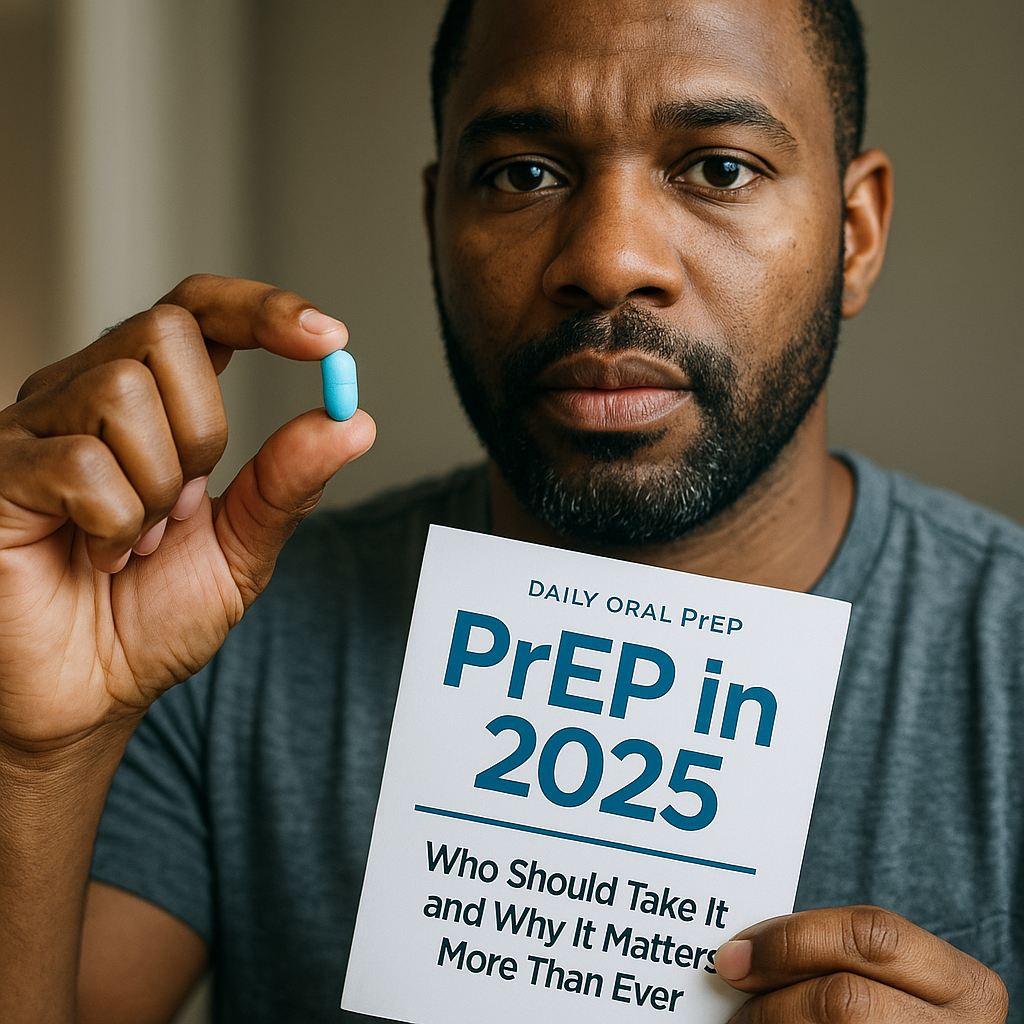In recent years, the fusion of AI and genomics HIV cure research has opened promising new pathways toward eliminating HIV altogether. As scientists apply machine learning to vast genetic datasets, novel targets and precisely engineered therapies are coming into view. This article explores where AI and genomics intersect in the fight for an HIV cure, the latest advances, remaining challenges, and why this convergence could mark a turning point.
Table of Contents
1. AI in HIV Research: From Prediction to Discovery
2. Genomics & Gene Editing: Precision Tools in the Cure Toolkit
3. Where AI + Genomics Meet: Synergies Driving Innovation
4. Challenges, Ethics & Roadblocks
5. What’s Next: The Road Toward a Cure
6. FAQ
AI in HIV Research: From Prediction to Discovery
Artificial intelligence has already begun reshaping HIV science. Machine learning models trained on viral sequences, clinical data, and treatment histories can predict drug resistance and forecast patient outcomes. Source
One early example: the HIV Treatment Response Prediction System (HIV‑TRePS), based on data from the Resistance Database Initiative, was among the first tools enabling clinicians to upload patient data and receive AI‑based guidance on which drug combinations would work best. Source
More recently, AI is being used to sift through massive genomic and proteomic datasets to identify new viral vulnerabilities or host dependency factors—those human genes HIV needs to replicate. Source
Generative AI is also being applied to design novel therapeutic molecules. For example, a technology known as Diff4VS uses a diffusion model guided by a classifier to generate candidate small molecules with potential to inhibit HIV. Source
Genomics & Gene Editing: Precision Tools in the Cure Toolkit
Advances in genomics and gene editing have been pillars in HIV cure research long before AI became central. Today, they remain critical.
HIV integrates its genetic material into the DNA of host cells, hiding silently in latent reservoirs. Understanding exactly where and how HIV does this is vital for excising or inactivating the virus. Recently, researchers uncovered a new mechanism by which HIV-1 integrase selects integration sites, highlighting vulnerabilities for targeted therapies. Source
Gene editing tools like CRISPR, TALENs, and zinc finger nucleases allow scientists to cut HIV sequences out of infected cells or to disrupt human genes (like CCR5) that HIV exploits to infect cells. Source
One promising approach in development is the PROVIREX platform, which is being engineered with precise editing strategies for persistent viral infections. Source
mRNA‑based approaches, inspired by COVID‑19 vaccine technology, are also being examined. These therapies could “expose” hidden virus inside cells (the so-called “kick and kill” strategy), allowing immune or therapeutic agents to remove infected cells. Source
Where AI + Genomics Meet: Synergies Driving Innovation
The real promise lies where AI and genomics intersect. Here are key areas unlocking breakthroughs:
1. Target Discovery & Viral Integration Analysis
AI models can analyze genomic and multi-omic data to flag new host genes or viral factors essential for HIV persistence. These become candidate targets for gene editing. Source
2. Predicting Off-Target Effects & Safety
One of the critical risks in gene editing is unintended edits elsewhere in the genome. AI tools help predict off-target activity and optimize guide RNA designs that balance efficiency and safety.
3. Personalized Therapeutic Design
Each person’s viral reservoir may differ in sequence or behavior. AI can integrate individual genomic, transcriptomic, and proteomic data to tailor gene editing or immunotherapy strategies.
4. Optimizing Clinical Trials
AI aids in trial design—selecting participants most likely to respond, simulating outcomes, or adapting protocols in response to interim data—thereby reducing cost and timeline.
5. Generative Molecule Discovery
As noted, AI diffusion models can propose novel small molecules, peptides, or biologic constructs engineered to target HIV or modulate host factors. These can complement gene-based strategies.
Challenges, Ethics & Roadblocks
Despite the excitement, many hurdles remain:
- Data Quality & Availability
- “Black Box” Interpretability
- Delivery to Latent Reservoirs
- Safety & Off‑Target Risks
- Ethical, Equity & Access Concerns
- Cost & Scaling
- Regulatory Hurdles
What’s Next: The Road Toward a Cure
In practice, the path forward likely involves combination therapies: pairing AI‑guided gene editing with immunotherapies, small molecules, or latency reversal agents. For example, an AI-designed molecule might sensitize latent HIV, followed by a CRISPR-based excision in the same patient.
Ongoing and upcoming clinical and preclinical trials will test safety, delivery, and efficacy. Funding and global collaboration will be vital, particularly in low- and middle-income regions most affected by HIV.
Importantly, as AI and genomics mature, we may see predictive “digital twin” models—simulated versions of a patient’s viral/immune system—that allow in silico testing of cures before real-world trials.
If AI and genomics continue to converge, the next decade may take us from managing HIV to truly curing it.
FAQ
Q: Can AI alone cure HIV?
A: No. AI is a tool—it can identify targets, optimize designs, and predict outcomes. But curing HIV will require molecular therapies (gene editing, biologics, immune strategies) that act on those targets.
Q: Have any humans been cured of HIV?
A: A few individuals, like the “Berlin” and “London” patients, achieved long-term remission via stem cell transplants. However, these are not scalable or safe for broad use.
Q: Is gene editing safe for patients?
A: Early trials are underway, and safety is a top priority. Off-target risks, immune reactions, and delivery errors remain concerns to be resolved before widespread use.
Q: When might an HIV cure become available?
A: Timelines are uncertain. Some therapies may enter clinical trials in the next few years, but broad public availability likely takes a decade or more, depending on success and regulatory pathways.
Q: How will low-income countries benefit?
A: Advocates are pushing for equitable access, tiered pricing, and capacity building. Global collaborations and licensing models will be key to ensuring benefits reach all who need them.
This content is not medical advice. For any health issues, always consult a healthcare professional. In an emergency, call 911 or your local emergency services.




